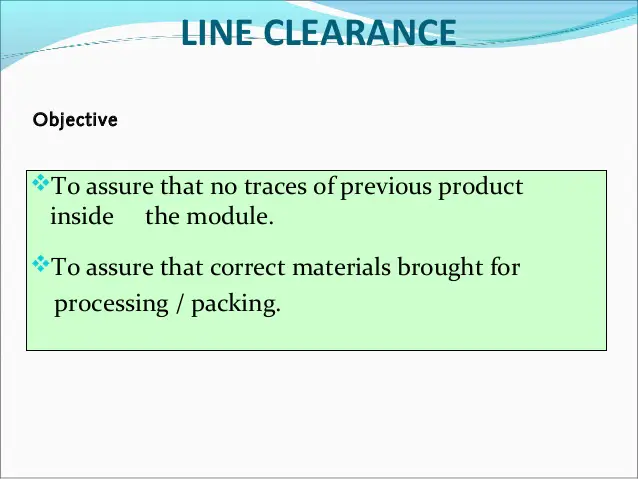OUT OF SPECIFICATIONS (OOS)
- Out of Specification (OOS) means the test result that falls outside the specifications or acceptance criteria which has been specified in the official compendia monographs or the finished product specification in registration dossiers.
OOS IS OBSERVED IN THE ANALYSIS OF:
- Stability study
- Finished product
- In-process
- Raw materials
- Packing materials
Identification of OOS/OOT Result •
Out of Specification (OOS) Result –
A test result that does not comply with the pre-determined acceptance criteria.
Test results that fall outside of established acceptance criteria that have been established in official compendia
Out of Trend (OOT) Result –
- A stability result that does not follow the expected trend, either in comparison with other stability batches or with respect to previous results collected during a stability study.
- The trends of starting materials and in-process samples
- Yield out-of-trend data.
- Environmental trend analysis such as for viable and non-viable data (action limit or warning limit trends)
Atypical / Aberrant / Anomalous Result –
- Results that are still within specification but are unexpected, questionable, irregular, deviant, or abnormal. Examples would be chromatograms that show unexpected peaks, unexpected results for stability test points, etc.
US FDA: GUIDELINE FOR INDUSTRY INVESTIGATING OOS TESTING RESULTS FOR PHARMACEUTICAL PRODUCTION
- PHASE I: LABORATORY INVESTIGATION should include an initial assessment of the accuracy of the laboratory’s data.
- PHASE II: FULL-SCALE OOS INVESTIGATION consists of a production process review and/or additional laboratory work
OOS Objective:
To identify the route cause
To conclude with a decision on either batch rejection or release
To take appropriate corrective and preventive action Should Be
- Through
- Timely
- Unbiased
- Well documented
- Scientifically sound Investigation
Phase I laboratory investigation
- The investigation should include an initial assessment of laboratory data
- The investigation should be done before discarding test preparation
- A hypothesis test can be conducted using the original test preparations
- If an obvious error is found laboratory test result should be invalidated and a retest should be done Investigation
Phase II / Full-Scale Investigation
No obvious laboratory error found in the initial laboratory investigation
For a contract laboratory, the laboratory should send the data obtained to manufacturers for full-scale investigation
- Should be conducted using a predefined procedure (SOP)
- Production procedure review
- Sampling procedure review
- Additional laboratory testing
- Highest priority Investigation
- Manufacturing investigation Additional Laboratory Test Investigation
Manufacturing/ Production Process Review
- Should be conducted by QA
- Should involve all other relevant department i.e. production, development, engineering, if needed
- If contract manufacturer then all sites (contract manufacturing site)
- Timely, thorough, and well-documented Investigation
Phase III investigation
Review the completed manufacturing investigation and combined laboratory investigation into the suspect analytical results, and method validation for possible causes of the results obtained.
To conclude the investigation all of the results must be evaluated.
The investigation report should contain a summary of the investigations performed and a detailed conclusion.
For microbiological investigations, where appropriate, use risk analysis tools to support the decisions taken and conclusions drawn. It may not have been possible to determine the actual root cause therefore a robust most probable root cause may have to be given.
The batch quality must be determined and disposition decisions are taken.
LABORATORY ERROR
Laboratory error is the cause of OOS results which may occur from the instrument, reagent, reference standard, environment condition, test method, analyst, and calculation within the laboratory.
